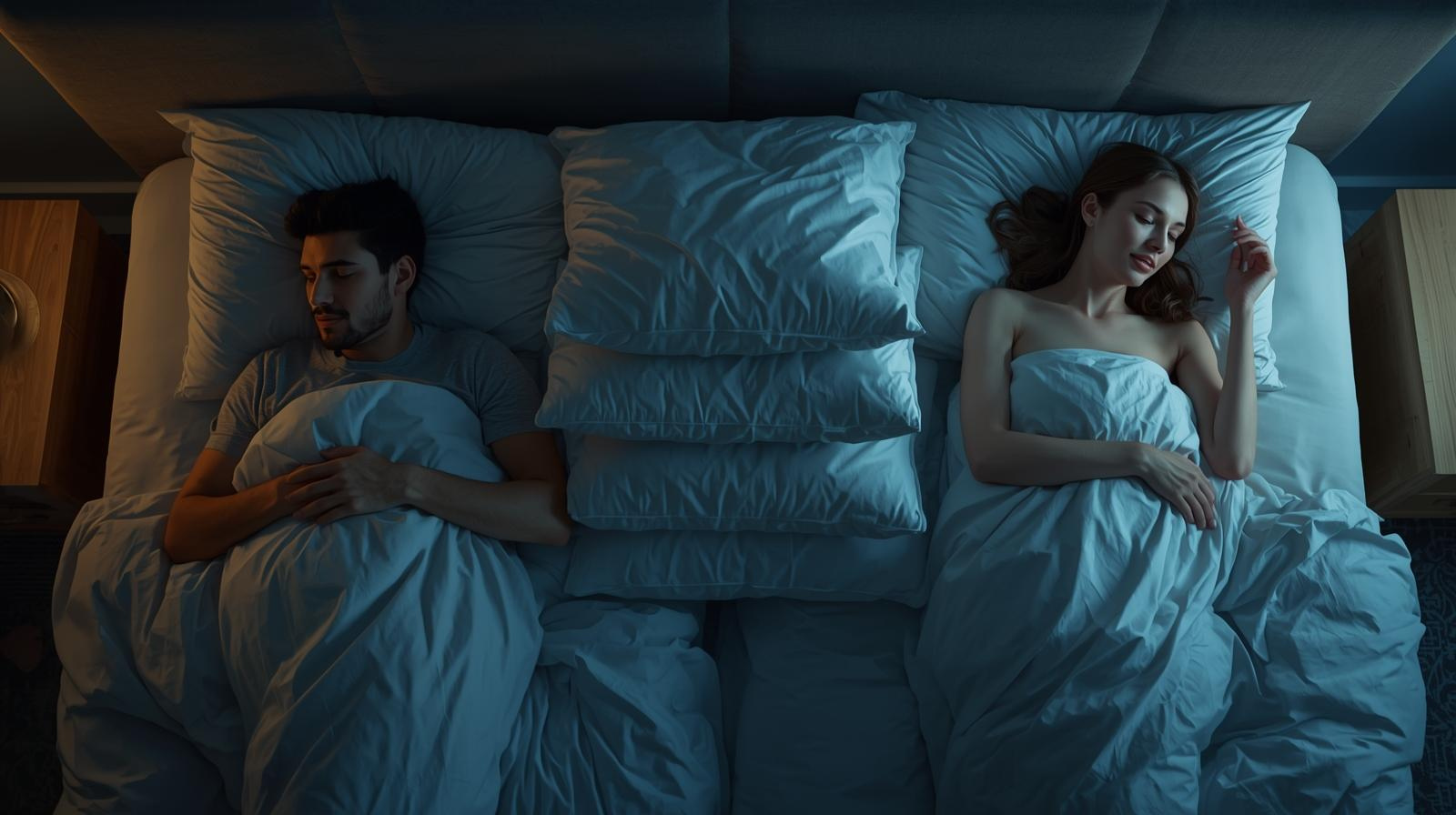Free Shipping - On Orders Over $99 (USA, Canada, UK, & AU)

What Is the Ideal Sleep Temperature?
May 31, 2021 3 min read
If you’ve ever tried sleeping through a heatwave or remember being curled into a ball while out camping, you’ve learned how important temperature is for sleep.
But the above scenarios are extreme examples. More commonly, people struggle to figure out the “Goldilocks” of bedroom temperature ranges: not too hot, not too cold. Indeed, studies show that sleeping in hot environments disrupts sleep just as much as cold ones, the former even decreasing time spent in deep sleep.
Luckily, sleep experts have figured out ideal sleep temperature ranges, which are different for adults and infants. Knowing these can help you figure out how to adjust your thermostat for restful sleep.
Ideal Sleep Temperature for Adults
According to the American Academy of Sleep Medicine (AASM), a room temperature of around 68°F (20°C) is best for sleep.
However, the AASM also says different people prefer hotter or colder bedrooms, so you should use comfort as your guide. The Sleep Foundation takes a similar stance, claiming the optimal sleep temperature for adults is around 65°F and that most doctors recommend keeping the thermostat set between 60°F - 67°F (15°C-19°C).
The reason most recommend a slightly colder ambient temperature for sleep is that your body's core temperature — in response to environmental cues — drops in preparation for sleep. A hot room could prevent this and keep you awake.
Sleep Temperature for Babies
Newborn babies can’t regulate their body temperature as well as adults. They can lose heat much more quickly due to their smaller bodies, fast metabolism, and immature skin. All this is even more true for low-birth-weight and premature babies.
But that doesn't mean babies need to sleep in a warm room. It’s recommended to keep the bedroom cool, but slightly above the temperature range recommended for adults. This will not only keep your baby comfortable but is also recommended as a precaution against SIDS. According to the 7th edition of Burns' Pediatric Primary Care, the ideal newborn sleep temperature is 68°F- 72°F (20° to 22°C).
Tips for Comfortable Sleep
With the warmer months approaching, you may find it harder to keep your bedroom cool than you did in the winter when lowering the thermostat was enough to help you (and everyone else) sleep through the night. These days, you might want to try doing these things:
Keep shutters down during the day
This will prevent heat from warming up your bedroom during longer and hotter days. If you don’t have shutters, heavy-duty blinds will do the trick.
Open the windows at night
Letting the breeze in for 15 minutes after sunset will lower the temperature in your sleeping area. Keep windows tilted during warm nights.
Switch to different bedding
Replace heavy duvets and wool blankets with light cotton sheets or linen covers. The same rule applies to a baby’s bedding.
Wear bedwear
Studies show sleeping semi-nude can leave you feeling cold during the night, leading to disrupted sleep. If you’re not going through a heatwave, light PJs will keep you comfortable warm.
Invest in a dehumidifier
If you live in a humid area, a dehumidifier can help cool down your bedroom.
Besides keeping your room comfortably cool (not cold), other steps to take for comfortable sleep include exercising in the afternoon, avoiding alcohol and caffeine before bedtime, taking care of your health, and investing in snoring solutions. The little extra effort will be worth it in the nights to come.
Resources:
- Okamoto-Mizuno K, Mizuno K. Effects of thermal environment on sleep and circadian rhythm. J Physiol Anthropol. 2012;31(1):14. doi:10.1186/1880-6805-31-14
- The American Academy of Sleep Medicine. How to Sleep Better. Published 2012. Link Here.
- Pacheco D, Wright H. The Best Temperature for Sleep. Sleep Foundation Website. Published October 29, 2020. Link Here
- Garzon Maaks D, StarrN, Brady M, Gaylord N, Driessnack M, Duderstadt K. Burns Pediatric Primary Care. 7th edition. 2019. Elsevier. Link Here.
Also in Blog

Healthy Sleep Goals For 2026
December 22, 2025 6 min read

💨 Are Your Nighttime Breathing Issues Robbing You of Your Health and Your Energy?
December 12, 2025 3 min read
Breathing issues during sleep, collectively known as sleep-disordered breathing, are a major public health concern.

Is Your Snoring a Sign of Something More Serious? Unpacking the Science of Sleep
December 05, 2025 3 min read
When you snore, what's actually happening?
Join our Insiders Club
Every week you will receive specials, discounts, and giveaways.
Categories
- Better Sleep
- depression
- Fitness
- funny animal
- Global Citizenship
- health
- Mental Health
- mouthpiece
- nutrition
- pillow
- Productivity
- relationships
- sleep
- sleep apnea
- sleep deprivation
- Sleep Tech
- snoring
- snoring humor
- snoring jokes
- snoring sounds
- stop snoring
- StopSnoringStartLiving
- technology
- Tongue displacement
- travel
- video
- Young Adult

